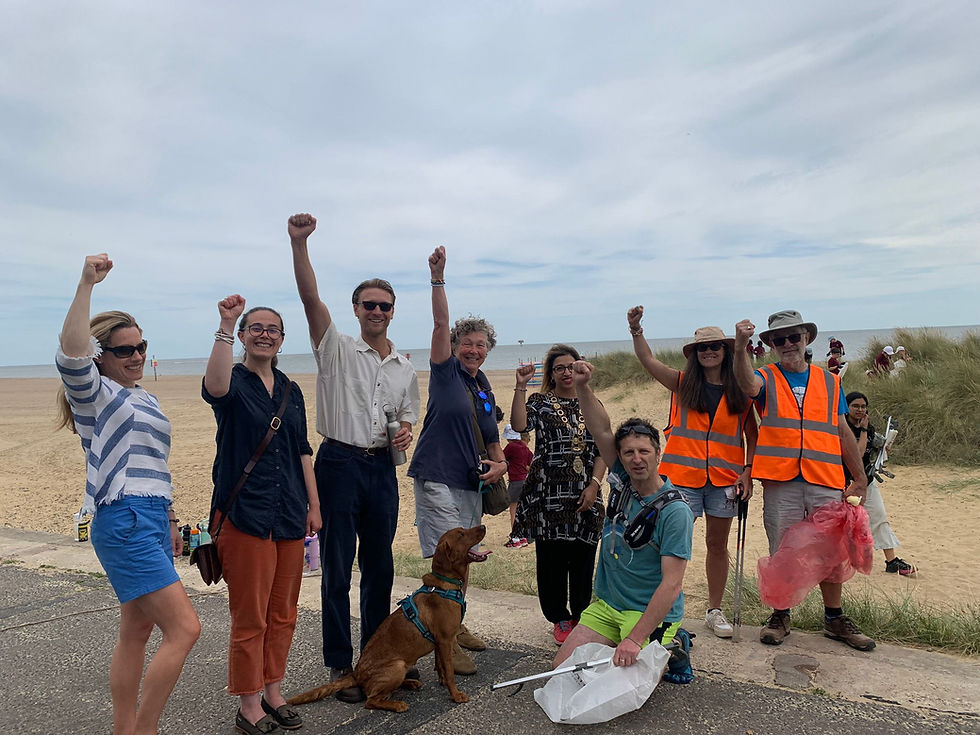Circular Coastline Running
- Nathalia Fisher
- May 5, 2023
- 3 min read
Our recent moves, in a circular fashion
When we first started researching our new running kit, our main concern was that it looked good and didn’t worsen the problem we are trying to solve- unnecessary pollution. We wanted something that would not pollute our oceans and could and would be infinitely recycled - properly ‘circular’ in that it was made out of recycled material and was itself recyclable- and looked good!
We also needed to be sure everyone making it received fair wages, and that the working conditions were decent throughout the supply chain.
We had no easy task on our clean(ish) hands, as the fashion industry is a very dirty one. And there are solutions for recycled materials that are not themselves recyclable - i.e. not circular.
There are some basic, but monstrous facts that have to be acknowledged:
Up to 64% of regular clothing is made of plastic.
(Source: Friends of the Earth. Microfibres: The Plastics In Our Clothes.)
A dump truck of textile waste enters a landfill every second.
(Source: Stella MacCartney: One Garbage Truck of Textiles Wasted Every Second. Report Creates Vision For Change.)
½ million tonnes of textile microplastics enter oceans worldwide every year.
(Source: International Union of Conservation of Nature. Primary Microplastics In The Oceans.)
1% of clothes are recycled effectively.
(Source: Ellen MacArthur Foundation: A New Textile Economy Redesigning Fashion’s Future.)
We knew we needed to be that 1% and our running T-shirt had to be recycled and recyclable if we were to maintain the integrity of our vision.
After weeks of research and our Instagram followers’ help, we managed to design our first circular running T-shirt. Circularity has to be at the heart of the design process from the beginning for something to be a part of the circular economy.

This T-shirt is designed to be sent back when worn out. All our T-shirts are made with a combination of new and post-consumer organic cotton, and they could be 2nd, 3rd or even 4th generation T-shirts. This is the circular economy for clothing. Everyone must do this - for our environment and for the economics: if everyone does it then it becomes less and less expensive.
To make sure no microplastic or any chemicals are released into the oceans, our material of choice was organic cotton. It is also biodegradable and can be recycled infinite times. The T-shirts are printed with water-based ink and renewable energy is used throughout the whole supply chain.
We loved our new running T-shirts so much… we decided to share them with you. And hope you like them too. Check out our new store and purchase our new Circular Coastline Runner T-shirt. If you want to learn more about Remill Fiber, click here.
It will be properly tested in the first official run of 2023, from Newcastle.
So far, it has had 1 training run outing and been washed- to test its quality.
This year's Earth Day theme is “Invest in our planet”. We believe we can do this by working with companies that work towards a circular economy. That is an economy that works with nature, generates no waste and uses renewable resources. Of course, it would have been great if the government had made this easier and we hope that they will follow us. An economy would be beautiful if it was responsible for its products from beginning to end. Governments can make this a reality, but they are not YET! Please don’t leave it too late. The "Fast Fashion" industry is one of the most damaging to our environment, and things must change. Sign the petition demanding government regulation. Let’s Act Now. Let's run with the shirt now! And we will report back about its strengths and weaknesses.



Comments